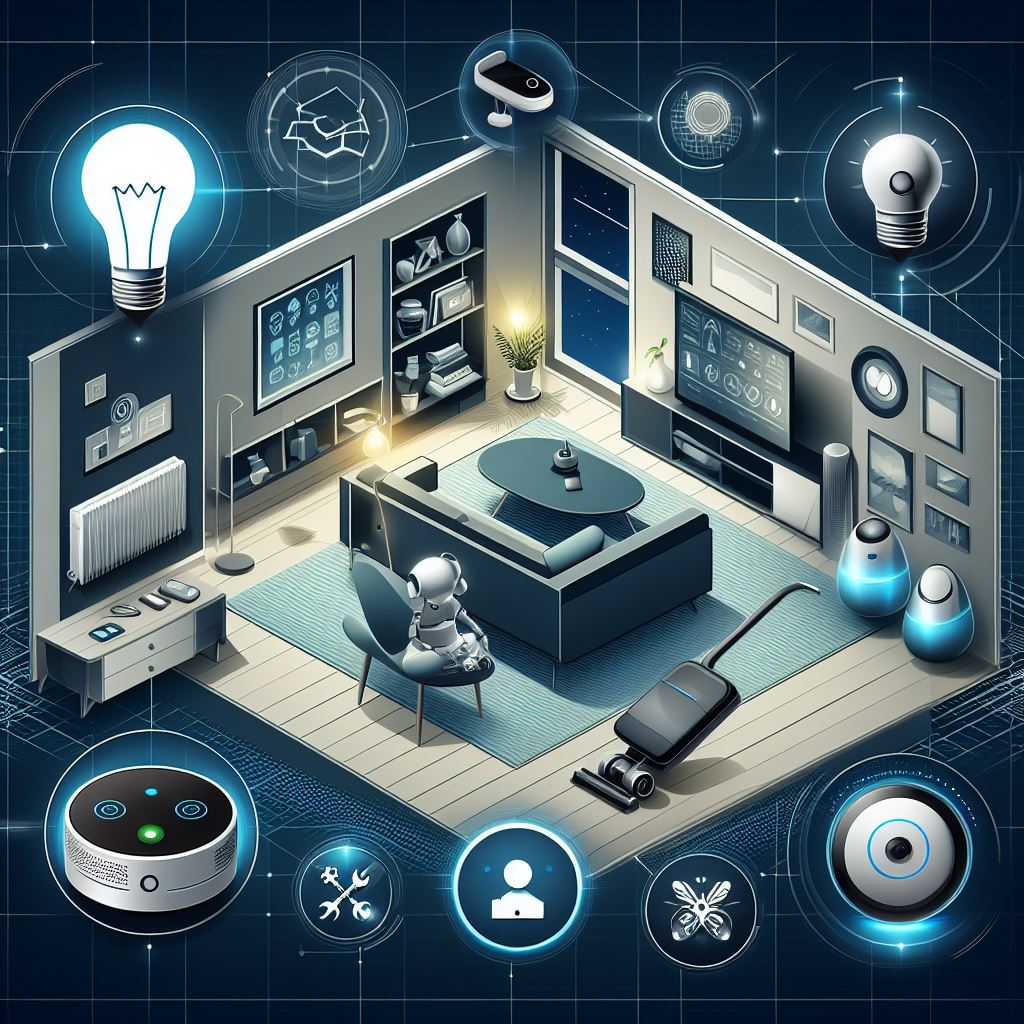The smart home industry is undergoing a profound transformation, driven by the convergence of Artificial Intelligence (AI) and the Internet of Things (IoT). What began with basic automation—like remote-controlled lights or thermostats—has evolved into a dynamic ecosystem of intelligent devices that learn, adapt, and interact seamlessly with users. As AI and IoT technologies continue to mature, they are not just enhancing convenience—they are redefining what it means to live in a connected home.
The Foundation: IoT as the Nervous System
At the core of any smart home lies the IoT infrastructure—a web of interconnected devices and sensors that collect and exchange data. These devices range from smart thermostats and lights to door locks, cameras, appliances, and more. IoT enables these components to be monitored and controlled remotely, typically via a smartphone app or voice assistant.
IoT provides real-time visibility and control, enabling users to automate daily routines, optimize energy consumption, and enhance security. However, while IoT connects devices, it is AI that brings intelligence to the system.
The Brain: AI Turns Data into Intelligence
AI transforms passive devices into intelligent agents capable of learning user preferences, predicting behaviors, and making decisions autonomously. Through machine learning algorithms and pattern recognition, smart home systems can adjust lighting based on time of day, suggest energy-saving settings, or even alert homeowners to unusual activity when they’re away.
Voice-controlled assistants like Amazon Alexa, Google Assistant, and Apple Siri are now commonplace, but the next generation of AI is moving beyond commands. It enables context-aware automation, where devices anticipate needs—such as preheating the oven when it’s dinner time or adjusting HVAC settings based on occupancy and weather forecasts.
Download PDF Brochure @ https://www.marketsandmarkets.com/pdfdownloadNew.asp?id=121

Energy Efficiency and Sustainability
One of the most impactful applications of AI and IoT in smart homes is in energy management. Smart thermostats, lighting systems, and connected appliances can monitor usage patterns and automatically optimize settings to reduce waste. AI can recommend usage schedules or detect when devices are left on unnecessarily, contributing to both cost savings and environmental sustainability.
As energy prices rise and environmental concerns grow, more consumers are turning to smart home solutions that offer real-time insights and intelligent energy optimization.
Enhanced Safety and Security
AI and IoT are also redefining home security. Smart doorbells, surveillance cameras, and motion sensors connected through IoT can alert users to activity in real-time. AI enhances this further with facial recognition, object detection, and behavioral analytics—enabling systems to distinguish between a delivery person, a known family member, or a potential intruder.
Security systems can now learn routines, recognize anomalies, and even integrate with local emergency services to respond more quickly in the event of a threat or hazard.
Health and Well-Being at Home
Another emerging area is health-focused smart home technology. IoT-enabled air quality monitors, sleep trackers, and smart kitchen devices can help users manage wellness and nutrition. AI-driven platforms provide personalized recommendations—such as improving air circulation based on indoor pollution levels or adjusting lighting to support circadian rhythms.
Especially in aging populations, AI-powered smart homes offer remote health monitoring, fall detection, and medication reminders—supporting independent living and reducing healthcare strain.
Challenges and Considerations
Despite rapid innovation, the smart home industry faces several challenges. Data privacy and security are top concerns, as connected devices collect sensitive personal information. Ensuring end-to-end encryption, secure data storage, and user consent is critical for consumer trust.
Additionally, interoperability remains a hurdle. With numerous brands and platforms, creating a seamless, unified experience can be difficult without standardization.
The Road Ahead
The future of smart homes lies in greater integration, personalization, and automation. With AI becoming more intuitive and IoT devices becoming more affordable, adoption is expected to rise globally. According to industry analysts, the smart home market is projected to surpass $200 billion in value by the end of the decade, fueled by innovation in AI, 5G connectivity, and edge computing.
Emerging trends like ambient computing, digital twins, and predictive maintenance are on the horizon—bringing the vision of fully intelligent homes even closer.
AI and IoT are no longer futuristic concepts—they are reshaping homes today. From energy savings and enhanced security to personalized comfort and wellness, the smart home industry is unlocking new ways to live smarter, safer, and more sustainably. As technology continues to evolve, so too will our homes—becoming not just connected, but truly intelligent living environments.
